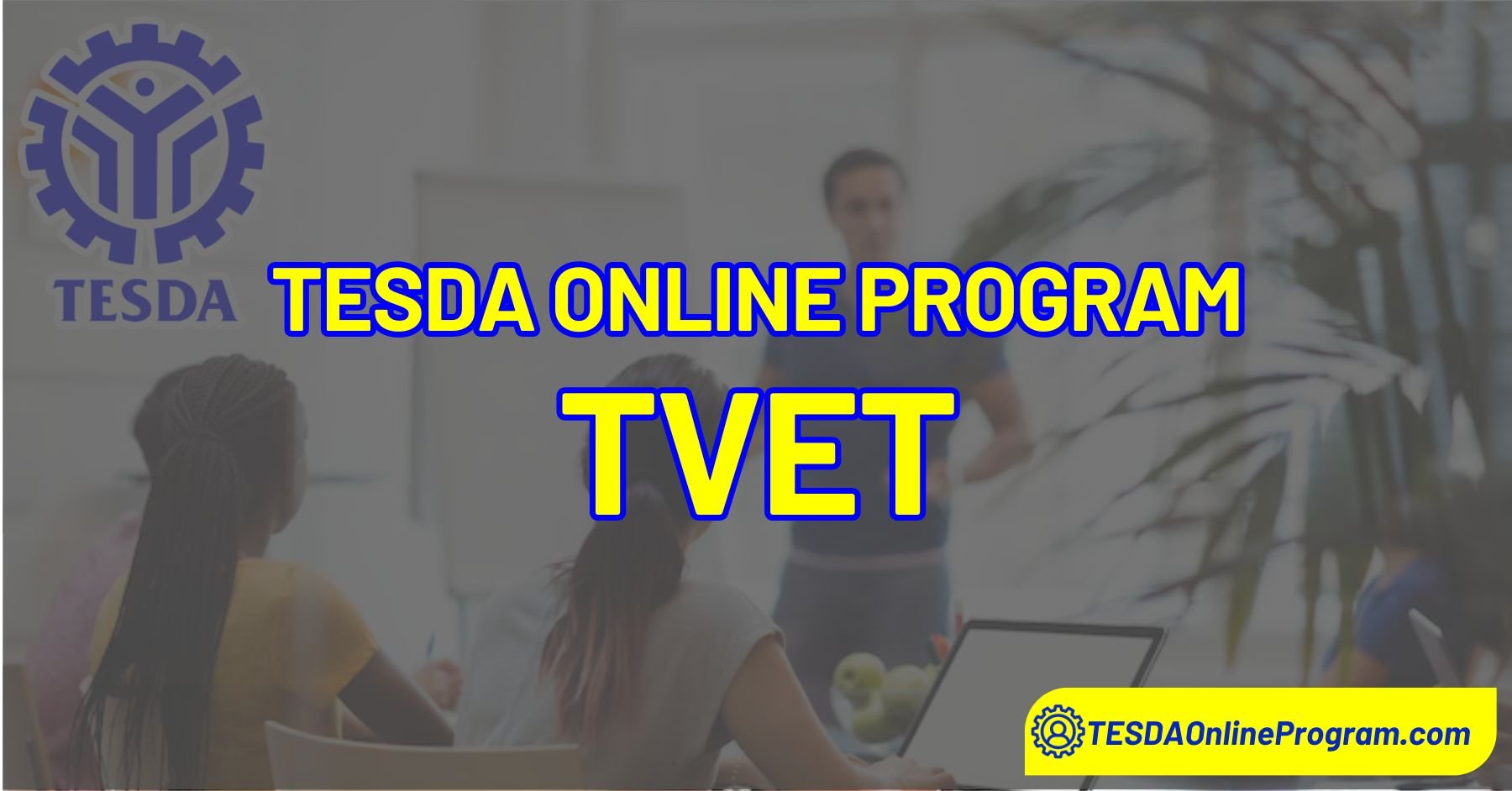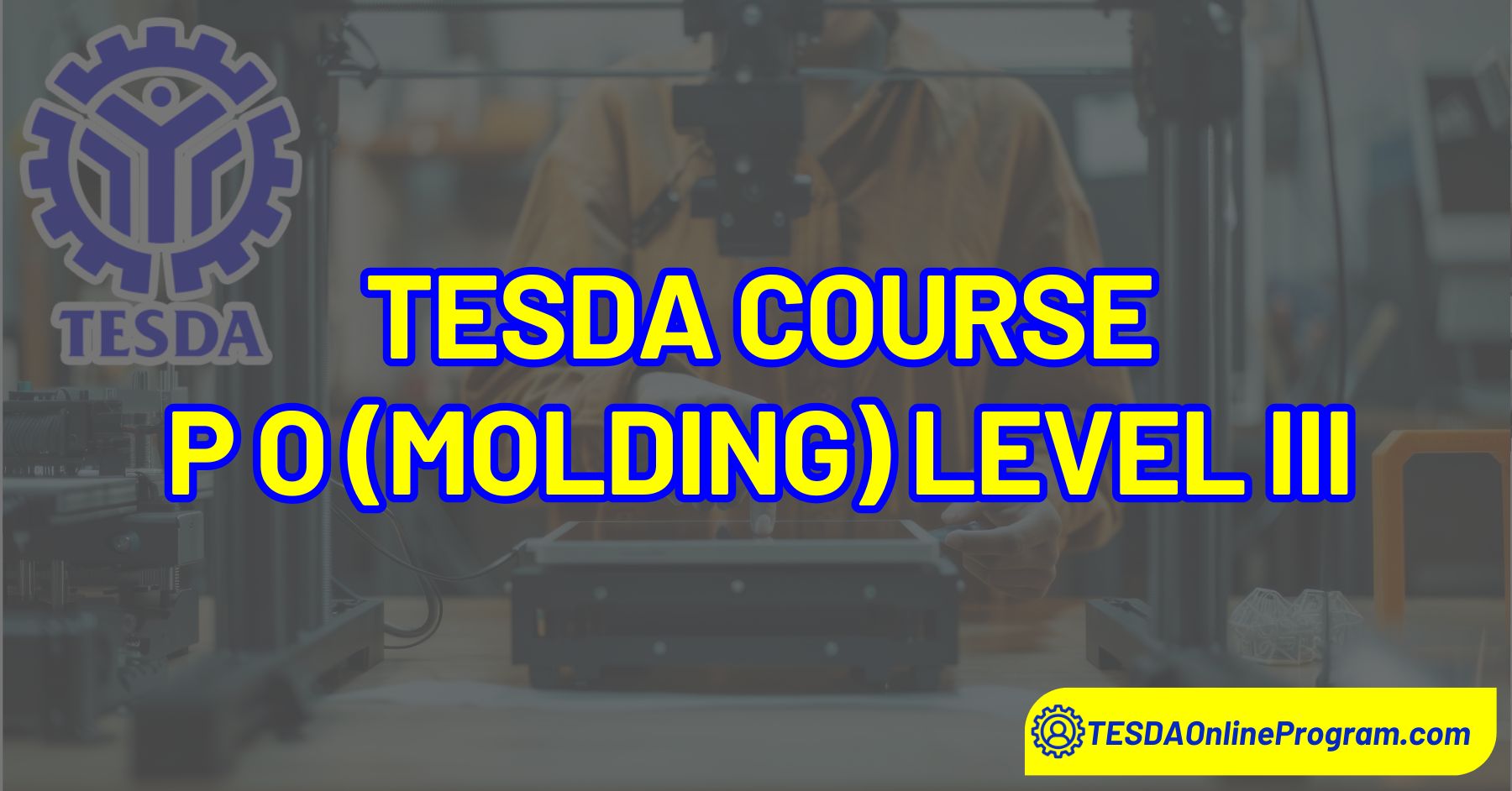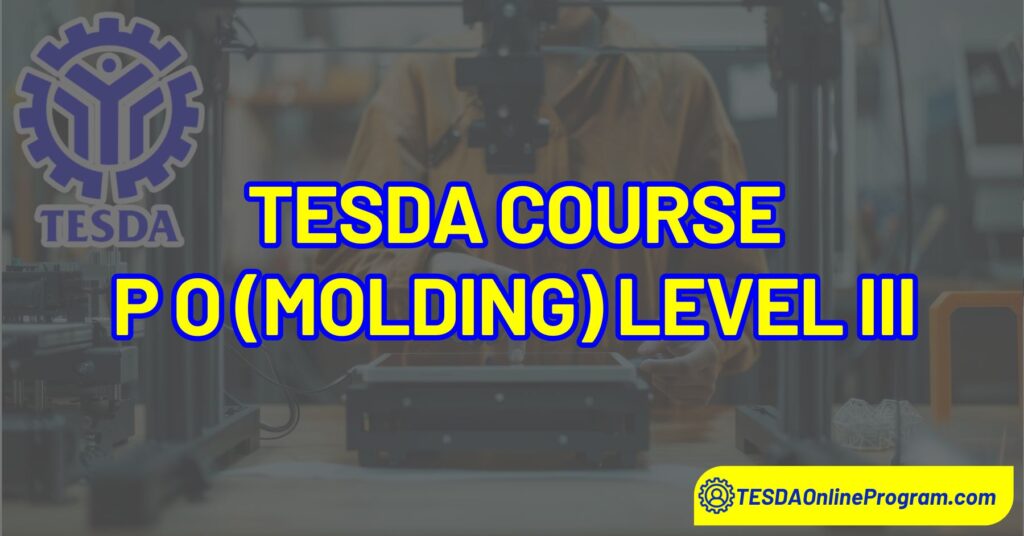The TESDA TVET Online Courses, offered through the TESDA Online Program, provide accessible and flexible learning opportunities for individuals looking to enhance their skills and knowledge. These courses are designed to support technical-vocational education and training (TVET) by providing learners with industry-relevant skills that can help boost their employability.
Also read: TESDA Trainers Methodology Courses
Among the available courses are Trainers Methodology I and Trainers Methodology II, which are specifically tailored for those who aspire to become effective trainers in their respective fields. These programs equip participants with the competencies needed to deliver quality training, assess learner performance, and contribute to workforce development.

Benefits
TESDA TVET Online Courses by the TESDA Online Program offer several benefits:
- Convenience: Learn anytime, anywhere at your own pace.
- Cost-Effective: Access training for free for everyone who wants to enroll.
- Skill Development: Gain valuable skills in Trainers Methodology I & II, enhancing your teaching ability.
- Career Advancement: Improve qualifications for better job opportunities.
- Accessible Resources: Use online materials and tools to support your learning journey.
Trainers Methodology I Online Course
The global workforce is evolving, and skilled workers are in high demand. Trainers Methodology I, offered by TOP, equips individuals with the skills to become effective TVET trainers. This course covers training and assessment competencies, preparing trainers to guide diverse learners toward successful careers. Enhance your teaching skills and help shape a brighter workforce future with this program.

Modules
Module 1: Supervising Work-Based Learning
This module covers the skills needed to fulfill your duties as a trainer in work-based training. The course helps you understand work-based learning and its modalities, as well as planning, implementing, and evaluating a work-based training program.
Unit 1: Introduction to Work-Based Learning
Lesson 1: Understanding Work-Based Learning
Lesson 2: Stakeholders of Work-Based Learning
Upon completion of this unit, you will possess the necessary skills to:
- Define the modalities of work-based learning
- Describe the features of the DTS Law
- Explain the role of the stakeholders in work-based learning
- Identify the challenges in institutionalizing work-based learning
Unit 2: The Work-Based Training Plan
Lesson 1: What is a Work-Based Training Plan?
Lesson 2: Preparing a Work-Based Training Plan
Upon completion of this unit, you will possess the necessary skills to:
- Identify the bases in preparing the training plan
- Explain the essential parts of the training plan
- Prepare a work-based training plan
Unit 3: Implementing and Monitoring the Work-Based Training
Lesson 1: Providing Training Orientation
Lesson 2: Monitoring the Work-Based Training
Lesson 3: Addressing Difficult Situations
Upon completion of this unit, you will possess the necessary skills to:
- Provide orientation (in-school and in-company) to the trainees
- Describe methods of monitoring trainees’ progress and well-being
- Provide appropriate feedback to trainees
- Determine actions to take in case problems arise
Unit 4: Evaluating the Work-Based Training
Lesson 1: Evaluating the Performance of Trainees
Lesson 2: Evaluating the Training Program
Upon completion of this unit, you will possess the necessary skills to:
- Explain the role of the different bases for evaluating trainee performance
- Demonstrate the procedures for drafting performance evaluation tools
- Discuss the importance of evaluating the program
- Enumerate the tools for evaluating the WB training program
Module 2: Utilizing Electronic Media in Facilitating Training
This course covers the competence needed to use electronic media for training in an advanced training environment, including equipment operation and maintenance.
Unit 1: Introduction to Facilitating Training and Electronic Media
Lesson 1: Integrating ICT in Teaching and Learning
Lesson 2: Principles of Facilitating Training
Lesson 3: Electronic Media Equipment
Lesson 4: Tips and Techniques
Upon completion of this unit, you will possess the necessary skills to:
- Define Information and Communication Technologies (ICT)
- Enumerate the principles of facilitating training
- Determine some examples of electronic media equipment
- Enumerate some tips and techniques for effective presentation.
Description of the unit
This unit covers the basics of facilitating training with electronic media. It provides an overview of why electronic media are used, examples of these media and their uses, as well as tips for effective presentations and utilizing the web in teaching.
Unit 2: Setting Up Media Equipment
Lesson 1: Setting up for Media Presentation
Lesson 2: Setting up for video demonstration
Upon completion of this unit, you will possess the necessary skills to:
- Determine the steps on how to set electronic equipment for film viewing
- Determine the steps on how to set electronic equipment for a presentation
- Determine the steps on how to set up electronic equipment for a video demonstration.
Description of the unit
This unit explores the use of electronic media equipment for training facilitation and media presentations.
Unit 3: Maintaining Electronic Media Equipment
Lesson 1: Safety Procedures
Lesson 2: Safety and Handling Procedures
Lesson 3: Maintaining Electronic Media Equipment
Upon completion of this unit, you will possess the necessary skills to:
- Determine general safety procedures in using electronic equipment
- Identify safety handling of electronic equipment
- Enumerate maintenance activities for personal computers.
Description of the unit
This unit will cover safety procedures for using and maintaining electronic equipment.
Unit 4: Other Resources
Lesson 1: Photo and Video Production
Lesson 2: Equipment Used in Presenting
Lesson 3: Audio Production Equipment
Upon completion of this unit, you will possess the necessary skills to:
- Identify the electronic media used in facilitating training
- Operate electronic media equipment to deliver a lesson
- Determine some tips and techniques for using electronic media equipment in presenting a lesson
- Maintain electronic media equipment.
Description of the unit
This unit will cover electronic media equipment used for training, their usage, maintenance, effective presentation techniques, and using the web for teaching. It also provides tips and techniques for effective presentation and web utilization.
Module 3: Maintaining Training Facilities
Unit 1: Planning Maintenance Activities
Lesson 1: Introduction to Maintenance Planning
Lesson 2: Training Facilities, Equipment and Tools
Upon completion of this unit, you will possess the necessary skills to:
- Explain the importance of maintenance
- Identify documents and forms relevant to maintaining facilities
- Explain the importance of documenting maintenance activities
- Identify the different training equipment, tools and materials
- Identify the activities involved in implementing inventory controls
Unit 2: Implementing Maintenance and Housekeeping Activities
Lesson 1: Implementing the Maintenance Program
Lesson 2: Implementing Housekeeping Activities
Lesson 3: Waste Management
Lesson 4: Occupational Health and Safety
Upon completion of this unit, you will possess the necessary skills to:
- Define maintenance program
- Identify the components of a maintenance program
- Differentiate the types of maintenance
- Define waste management
- Identify the components of a waste management plan
Unit 3: Monitoring and Documenting Maintenance
Lesson 1: Monitoring Maintenance Activities
Lesson 2: Documenting Maintenance Activities
Upon completion of this unit, you will possess the necessary skills to:
- Identify the means of monitoring, recording and reporting maintenance activities
- Discuss the procedures for storing documents
- Identify the basic filing methods
- Discuss the standards for keeping records and documents
Module 4: Planning Training Session
This course teaches you how to plan training sessions. It includes identifying learners’ requirements, preparing session plans and instructional materials, and organizing learning, teaching, and assessment resources.
Unit 1: Introduction to Trainer’s Methodology
Lesson 1: Who is the Trainer and/or Assessor?
Lesson 2: Competencies of a Trainer and/or Assessor
Lesson 3: Competency-Based Training (CBT)
Unit 2: Identifying Learners’ Training Requirements
Lesson 1: Determining Trainee’s Characteristics
Lesson 2: Pre-Training Assessment and Analysis
Unit 3: Preparing Session Plans
Lesson 1: Understanding the Training Regulations
Lesson 2: Understanding Competency-Based Curriculum
Lesson 3: The Session Plan
Unit 4: Preparing Instructional Materials
Lesson 1: Introduction to Competency-Based Learning Materials (CBLM)
Unit 5: Preparing Assessment Instruments
Lesson 1: Preparing Assessment Instruments
Unit 6: Organizing Learning and Teaching Resources
Lesson 1: Categorizing Areas of Competency-Based Training
Lesson 2: Preparing Training Activity Matrix
Module 5: Conducting Competency Assessment
This module covers the competency of conducting a National Assessment. It outlines the requirements for organizing assessment activities, preparing candidates, gathering and evaluating evidence, making assessment decisions, recording assessment outcomes, and providing feedback.
Unit 1: Planning and Organizing Competency Assessment
Lesson 1: Understanding Competency
Lesson 2: Understanding Competency Standards
Lesson 3: Competency Based Assessment
Lesson 4: Designing Evidence Gathering Tools
Upon completion of this unit, you will possess the necessary skills to:
- Define Competency
- Describe Competency Standards
- Explain Competency Based Assessment
- Describe how evidence gathering tools are designed.
Description of the unit
This unit covers everything you need to know about planning and organizing Competency Based Assessment. It starts by explaining competency, then dives into Competency Based Assessment and provides insights into evidence gathering methods and tool design.
Unit 2: Conducting Competency Assessment
Lesson 1: The Evidence Gathering Process
Lesson 1: Establish the Assessment Context
Lesson 2: Plan and Prepare the Evidence Gathering Process
Lesson 3: Prepare Candidates for Competency Assessment
Lesson 4: Gathering Evidence and Making Assessment Decisions
Lesson 5: Obtaining and Providing Feedback
Lesson 6: Recording and Reporting Procedures
Upon completion of this unit, you will possess the necessary skills to:
- Enumerate the 6 steps of the Assessment Process
- Establish the assessment context
- Prepare evidence gathering tools
- Prepare the candidate
- Collect evidence
- Make an assessment decision
- Provide feedback
- Record and report assessment results
- Identify the people involved in evaluating the assessment process
- Recite the Assessor’s Credo.
This unit will help you understand the 6 assessment process steps better. It also provides tips for each step.
Note: Upon completing each module or specific modules, you will receive a certificate to acknowledge your accomplishments and showcase your expertise in the subject matter. These certificates validate your dedication and commitment to ongoing learning.
Trainers Methodology II Online Course
The Trainers Methodology II Online Course by TESDA is perfect for aspiring training designers and developers. This fully online program covers all the skills needed to create and implement effective training programs. Accessible to anyone with an internet connection, it’s a great way to advance your career in technical education.

Module
Module 1: Developing Training Curriculum
UNIT 1: Establishing Training Needs Requirements
Lesson 1: Introduction to Competency-Based Curriculum Development
Lesson 2: Determining Training Requirements
Lesson 3: Determining the Learner’s Profile
Upon completion of this unit, you will possess the necessary skills to:
- Identify and consult the stakeholders to establish training aims and requirements
- Determine training requirements using appropriate methods
- Identify, access and confirm training regulations or other relevant specifications on which to base the learning program
- Record and document potential employment markets and career opportunities for training participants
- Identify potential learners
- Develop profiles of learners prior to entry to the course
- Determine language and literacy requirements of the learners according to profiles.
UNIT 2: Developing a Competency-Based Curriculum
Lesson 1: Translating a Competency Standard into a Competency-Based Curriculum
Lesson 2: Designing the Module of Instruction
Upon completion of this unit, you will possess the necessary skills to:
- Analyze competency standards/other relevant specifications to determine specific learning objectives, outcomes or goals
- Specify competencies to be acquired by the learners
- Develop or modify instructions according to needs and procedures
- Establish learning outcomes and assessment criteria according to procedures
- Identify resources required to support the training curriculum
- Design training curriculum based on the requirements of the competency standards
- Course entry and exit points are linked to occupational and educational opportunities
- Identify and document prerequisites for the course and for specific units or modules within the course
- Determine the delivery strategies and assessment
- Specify trainers’ qualifications to implement the course.
UNIT 3: Finalizing the Training Curriculum
Lesson 1: Purpose and Methods of Curriculum Validation
Lesson 2: The Curriculum Validation Process
Upon completion of this unit, you will possess the necessary skills to:
- Incorporate suggestions/recommendations in the curriculum according to the validation results
- Submit the finalized curriculum document to the appropriate personnel
Also read: Guide: How to Create a TESDA Online Account
Video: TESDA – Paano Mag Enroll At Pumili Ng Course Online? Actual Step-By-Step Guide For Beginner
This video will show you how to sign up for and choose an TESDA online course, perfect for beginners looking to learn new skills. The main goal of this video is to provide easy-to-understand, straightforward, and enjoyable guidance from start to finish.
Also read: TESDA DPM Program Registration & Training Level II Course
Summary
The TESDA TVET Online Courses, including Trainers Methodology I and II, provide comprehensive training to equip trainers with essential skills for effective teaching in the technical vocational education and training (TVET) sector. Covering instructional methods, assessment techniques, and curriculum validation, the program is regularly updated to meet evolving industry needs, encouraging trainers to invest in continuous professional development.




